
What Is Carpal Tunnel Syndrome?
The carpal tunnel is a narrow passageway on the palm side of your wrist made up of bones and ligaments. The median nerve, which controls sensation and movement in the thumb and first three fingers, runs through this passageway along with tendons to the fingers and thumb. When it's pinched or compressed, the result is numbness, tingling, weakness, or pain in the hand, called carpal tunnel syndrome.

Symptoms: Pain and Tingling
Carpal tunnel develops slowly. At first, you're most likely to notice it at night or when you first wake up in the morning. The feeling is similar to the "pins-and-needles" sensation you get when your hand falls asleep. During the day, you may notice pain or tingling when holding things, like a phone or a book, or when driving. Shaking or moving your fingers usually helps.

Symptoms: Weakness
As carpal tunnel syndrome progresses, you may begin to notice weakness in your thumb and first two fingers, and it may be difficult to make a fist or grasp objects. You may find yourself dropping things, or you may have trouble doing things like holding a utensil or buttoning your shirt.

Symptoms: Sensation Problems
Carpal tunnel syndrome can also cause a feeling of numbness in the hands. Some people feel like their fingers are swollen, even though no swelling is present, or they may have trouble distinguishing between hot and cold.

What Causes Carpal Tunnel Syndrome?
There usually isn't one definitive cause of carpal tunnel syndrome. Because the carpal tunnel is narrow and rigid, anytime there is swelling or inflammation in the area, the median nerve can be compressed and cause pain. Symptoms may be present in one or both hands (usually symptoms develop in the dominant hand first).

Who Gets Carpal Tunnel Syndrome?
Women are three times more likely than men to get carpal tunnel syndrome. Certain conditions can also increase your risk. These include:
- Diabetes, gout, hypothyroidism, and rheumatoid arthritis
- Pregnancy
- Sprain or fracture of the wrist

Could Your Job Be to Blame?
It's a common belief that frequent typing can lead to carpal tunnel syndrome. But it's actually three times more common among assembly line workers than it is among data-entry personnel -- and frequent use of vibrating hand tools increases the risk. In contrast, a 2001 study found that even heavy computer use -- up to seven hours a day -- did not make people more likely to develop carpal tunnel syndrome.
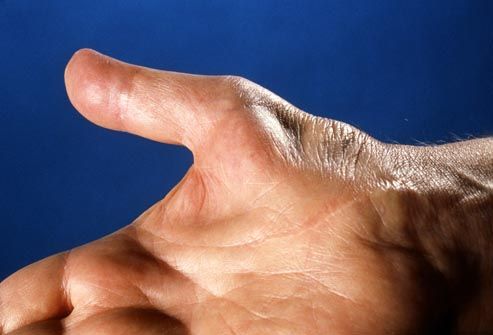
What Happens Without Treatment?
At first, symptoms of carpal tunnel syndrome come and go, but as the condition worsens, symptoms may become constant. Pain may radiate up the arm all the way to the shoulder. Over time, if untreated, carpal tunnel syndrome can cause the muscles on the thumb side of your hand to waste away (atrophy). Even with treatment, strength and sensation may never be completely restored.
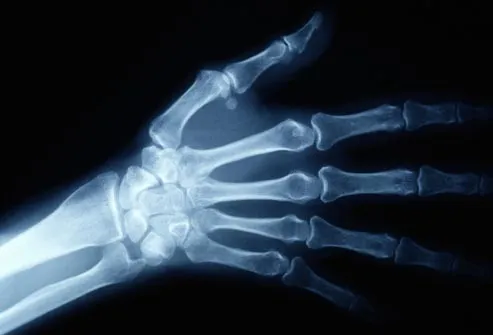
Carpal Tunnel or Something Else?
A few conditions have symptoms that can mimic carpal tunnel syndrome. These include:
- Injury to a muscle, ligament, or tendon
- Arthritis of the thumb or wrist
- Nerve problems such as diabetic neuropathy
Your doctor will do tests to rule out other health conditions.

Diagnosing Carpal Tunnel Syndrome
There are several tests your doctor will perform to see if you have carpal tunnel syndrome. The Tinel test involves tapping on the median nerve to see if it causes tingling in the fingers. In the Phalen test, the doctor will have you press the backs of your hands together for a minute to see if this causes numbness or tingling.
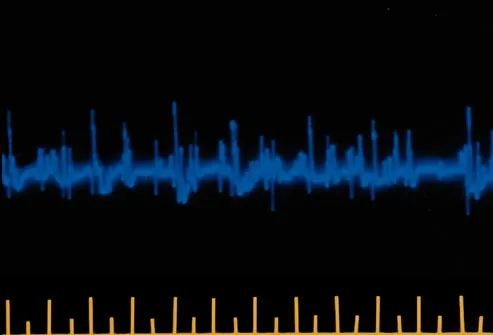
Electrodiagnostic Tests
To confirm the diagnosis, your doctor will order a nerve conduction study. In this test, electrodes are placed on the hands and wrists, and small electric shocks are applied to measure how quickly the median nerve transmits impulses. Another test, called electromyography, uses a fine needle inserted into a muscle to measure electrical activity and assess damage to the median nerve.
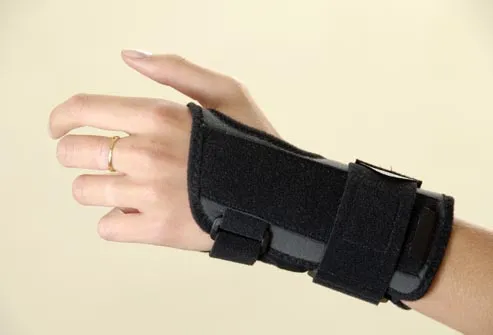
Treatment: Rest and Immobilization
Underlying causes such as diabetes or arthritis will need treatment. Then your doctor may advise resting the hand and wrist and wearing a brace to limit movement. Night use is important to prevent the wrist from curling during sleep, which can make your symptoms flare up. Non-steroidal anti-inflammatory drugs such as ibuprofen and naproxen, along with cold compresses, can reduce pain.

Medications for Carpal Tunnel
When carpal tunnel symptoms are more severe, your doctor may recommend corticosteroids by injection or by mouth. Steroids can temporarily reduce inflammation around the median nerve and ease your symptoms. Injection of a local anesthetic such as lidocaine can also relieve symptoms. Other things that may help include diuretics, also known as “water pills,” which reduce swelling, and vitamin B6 supplements.

Surgery for Carpal Tunnel Syndrome
If surgery is needed, it's typically done on an outpatient basis under local anesthesia (meaning you’re awake during surgery). The ligament overlying the top of the carpal tunnel is cut to relieve pressure. The healed ligament will allow more space in the carpal tunnel. Sometimes the procedure is done endoscopically, using a tiny camera inserted through a very small incision to guide the procedure.
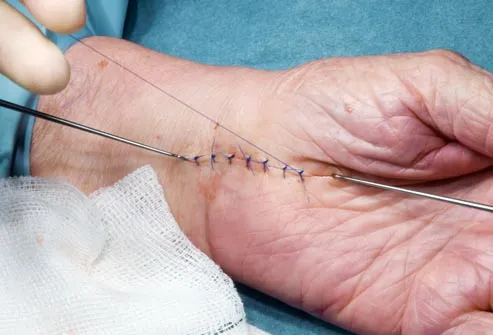
What to Expect After Surgery
There may be some swelling and stiffness right after surgery, which can be relieved by elevating your hand over your heart and moving your fingers frequently. You may need to wear a wrist brace for a few weeks while you heal, but will still be able to use your hands. Pain and weakness usually resolve within two months after surgery, but it may take six months to a year to recover completely.

Strengthening Exercises
Once carpal tunnel symptoms subside, a physical therapist can teach you stretching and strengthening exercises to help prevent pain, numbness, and weakness from coming back. A physical or occupational therapist can also teach you the correct ways to perform tasks so that the median nerve doesn’t become inflamed again, causing your symptoms to return.
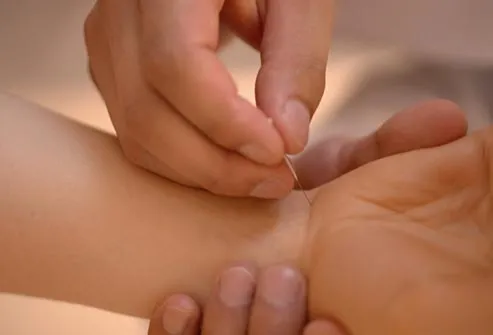
Complementary Treatments
Some studies suggest that chiropractic manipulation of the wrist, elbow, and upper spine can improve carpal tunnel syndrome. There is also some evidence that acupuncture may help restore nerve function and relieve symptoms. It’s important to speak with your doctor before starting these or any other complementary or alternative treatments.

Can Yoga Ease Carpal Tunnel?
There's strong evidence that yoga can reduce pain and improve grip strength. In one small study, participants who did an eight-week yoga regimen of 11 postures designed to strengthen, stretch, and balance the joints of the upper body had better outcomes than participants who wore wrist splints and participants who were given no treatment at all.

Can Carpal Tunnel Be Prevented?
Though there is no definitive way to prevent carpal tunnel syndrome, these things can help:
- Good posture
- Ergonomic tools and workstations
- Stretching hands and wrists regularly
- Taking frequent rest breaks to shake arms and legs, lean back, and change position throughout the work day
Source: http://www.webmd.com/pain-management/carpal-tunnel/ss/slideshow-carpal-overview


3 comments:
Have you tried gentle stretching device from mycarpaltunnel.com? Worn nightly, it provides relief without expensive medical expenses.
Have you checked out mycarpaltunnel.com? You get devices worn at night that will gently stretch the area over time.
I've always wondered about carpal tunnel syndrome. I know that it affects people who do a lot of typing, but I've never really understood what the causes and effects are. I work a 9-5 job behind a desk, so I'm very concerned about developing carpal tunnel syndrome. I didn't realize that assembly line workers are three times more likely to develop it compared to people who do regular typing. Knowing that is somewhat comforting.
Deanna R. Jones | http://www.kleisertherapy.com/carpal-tunnel-syndrome/
Post a Comment